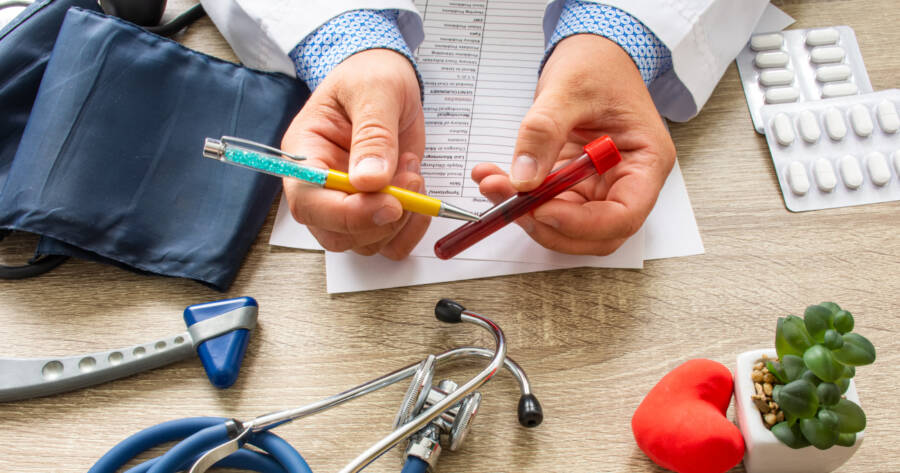When complications arise in the form of blood clots, knowing the symptoms can sometimes mean the difference between life and death. Fortunately, you can learn everything you need to know about blood clot symptoms with a search online right now.
The human body is a marvel of interconnected systems, working in harmony to keep us alive and functioning. One such essential system is our blood circulation. When a blood clot forms, it interferes with this system. What are the signs?
What Is a Blood Clot?
Before delving into the symptoms, it’s essential to understand what a blood clot is. Blood clots are gel-like clumps of blood that form when platelets and plasma proteins thicken, creating a semi-solid mass.
While clotting can be a beneficial and natural process to prevent excessive bleeding when injured, problems arise when blood clots form unexpectedly or in places they shouldn’t. When this happens, it can lead to severe health complications or even be life-threatening.
Symptoms Depending On The Clot’s Location
A blood clot’s symptoms can vary significantly based on where it’s located in the body. Here are the common symptoms associated with various clot types:
Deep Vein Thrombosis (DVT)
DVT is a clot that forms in a major vein, typically in the leg. The symptoms of DVT include:
- Swelling in the affected leg, often accompanied by pain or tenderness that’s felt most when standing or walking.
- A feeling of warmth in the swollen or painful area.
- Red or discolored skin.
- Fatigue or tiredness in the limb.
Pulmonary Embolism (PE)
PE happens when a DVT clot breaks free from its original site and travels to the lungs. If you experience any of these symptoms, it’s critical to seek medical attention immediately:
- Shortness of breath that appears suddenly and worsens with exertion.
- Sharp chest pain, often intensifying with deep breathing.
- Rapid heartbeat.
- Coughing up blood.
- Feeling lightheaded or dizzy.
Stroke
A stroke can occur if a blood clot blocks blood flow to an area of the brain. Symptoms include:
- Sudden numbness or weakness, particularly on one side of the body.
- Confusion, difficulty speaking, or understanding speech.
- Trouble seeing in one or both eyes.
- Severe headache without known cause.
- Loss of balance or coordination.
Risk Factors to Keep in Mind
While anyone can develop blood clots, certain factors can increase your risk. These include prolonged immobility (like during long flights or car rides), surgery, injury, certain medications, smoking, age, and some genetic conditions. It’s crucial to be aware of these risk factors and communicate with healthcare professionals if you believe you’re at a heightened risk.
The Diagnosis Process
Detecting a blood clot accurately is a nuanced process. While the diagnosis often begins with an examination of the symptoms and a physical check, more advanced tests frequently become necessary. Ultrasound, for instance, is a common method employed to detect DVT.
It capitalizes on sound waves to create images of blood flowing through the body’s veins and arteries. Another notable test is the D-dimer Test. This blood test is designed to detect minuscule fragments of blood clots that dissolve and circulate within the bloodstream. For a more detailed view, especially when clots are suspected in the lungs or other body parts, CT or MRI scans are recommended.
Treatment Options for Blood Clots
The urgency to treat a blood clot as soon as it’s identified cannot be stressed enough, especially given the risk of complications. The most prevalent treatment for blood clots is the use of anticoagulants, commonly known as blood thinners. Their primary function is to prevent the clot from enlarging and to reduce the possibility of the formation of additional clots.
For larger, more severe blood clots, thrombolytics might be prescribed. These drugs are specifically formulated to dissolve significant clots swiftly. Another treatment that complements the medicinal approach, especially after a clot, is the use of compression stockings. They are instrumental in curbing the potential for swelling following a clot.
Get Help Today!
Blood clots, while a natural response to an injury, can pose severe health risks when they form unexpectedly or in critical areas. Recognizing the signs and symptoms of blood clots, understanding the risk factors, and taking preventive measures can go a long way in ensuring your well-being.
While this article provides a comprehensive overview, the topic is vast, and there’s always more to learn. We urge you to continue your search online, deepen your knowledge, and always prioritize your health. Knowledge is power, especially when it comes to your well-being. The more knowledge you have, the safer you’ll be!
